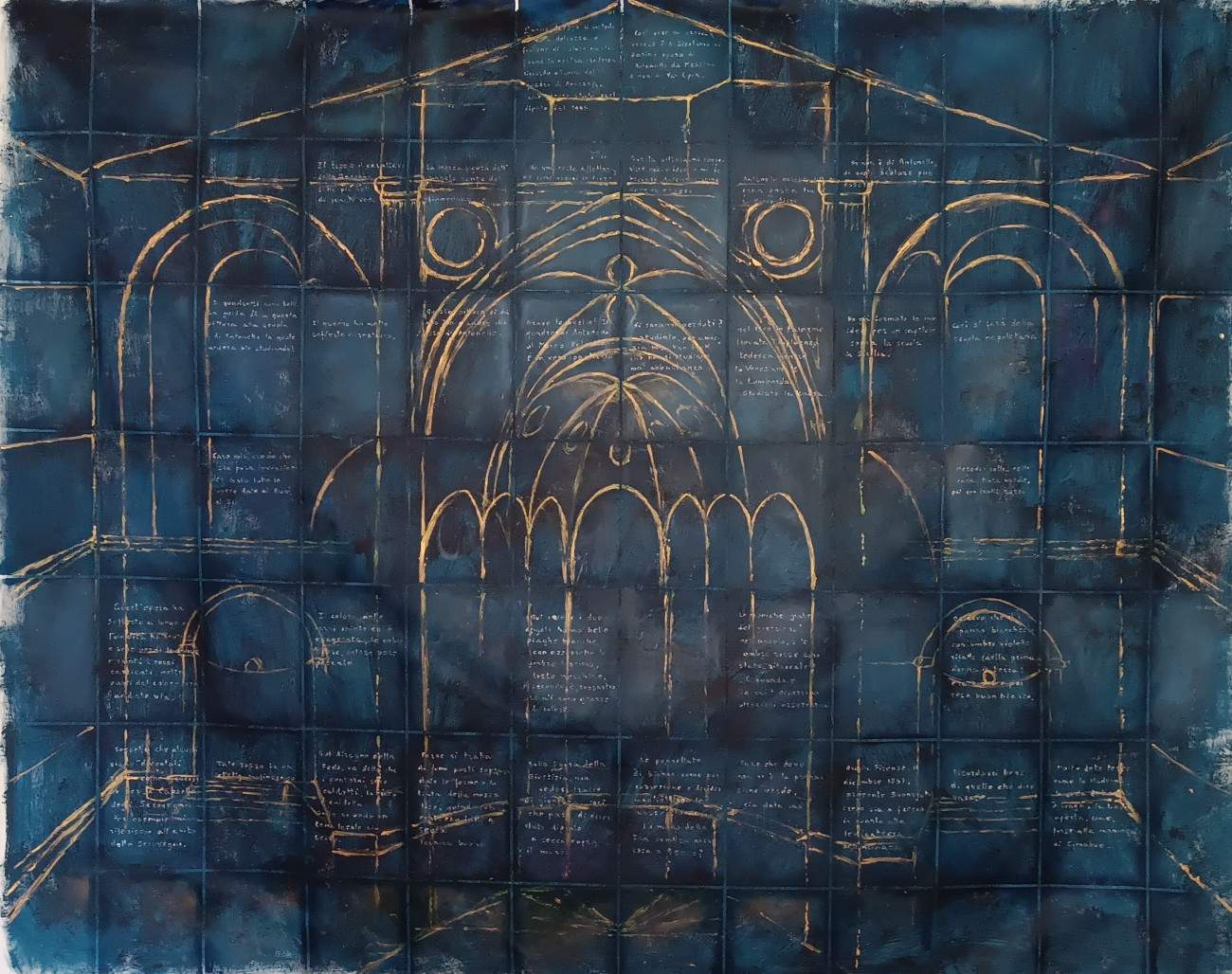Painting Cavalcaselle: Corrado Veneziano's exhibition in Rome dedicated to the great scholar
Palazzo Altemps, home of the Museo Nazionale Romano, in Rome welcomes from June 19 to July 28, 2024 the integral exhibition Dipingendo Cavalcaselle, di tersa mano, dedicated to Giovanni Battista Cavalcaselle (Legnago, 1819 - Rome, 1897), one of the most original and fascinating scholars of Italian art history. Presented as a partial premiere in November and December 2023 in the Biblioteca Nazionale Marciana in Venice, the Roman exhibition, curated by Francesca Barbi Marinetti, now brings together twenty-four canvases made by Corrado Veneziano, in which the artist strives to unite his most authentically contemporary research with Cavalcaselle’s revolutionary "investigations," all of which address medieval and Renaissance Italian art. Corrado Veneziano has long studied the Veronese author and reinterpreted his sketches and notebooks. His pictorial work starts from Cavalcaselle and backwards visually reinterprets the works of art - the colors, the textures, the techniques - of Cimabue, Antonello da Messina, Piero della Francesca, Raphael, Titian and many others, creating a kind of “third life” of the same pictorial works. On this chromatic and figurative tapestry, Veneziano then adds the “phrases”: those cavalcade-like scientific notes and deductions that participate in, share and develop the overall communicative thrust of the work. The words themselves-the signs of the Italian language, sometimes English-become symbols and signs from the elegant dynamic propulsion of the brilliant Venetian author.
“I worked for a long time on Cavalcaselle’s sketches. And the paintings I made became for me a very rich immersion in Renaissance and medieval technique. However, it was also a confirmation of the irreplaceable pleasure of the painting hand in its splendid craftsmanship. In spite of the intrusiveness of any technology or artificial intelligence,” is how Corrado Veneziano recounts his artistic connection with Cavalcaselle.
Giovanni Battista Cavalcaselle represents an example of great intellectual plurality, both in his professional biography and in his life. After fighting for Italian independence during the Risorgimento and suffering exile (having been sentenced to death by the Austrian government in Lombardy-Veneto), Cavalcaselle became an executive in the first post-unification Ministry of Culture. In this role, he continued to pursue his passion for art, developing an investigative approach that led him to carry out systematic studies of Italian and European works of art in order to understand with certainty who the author was. To do this Cavalcaselle moved from one part of the Peninsula and large parts of Europe to another. He traveled tirelessly from Sicily to Friuli, from Rome to Madrid, Paris, Brussels, London, and St. Petersburg. He entered merchants’ warehouses, public museums, churches and even cellars, where he often unearthed hitherto totally ignored or neglected masterpieces. Then, to support his insights more solidly, Cavalcaselle would record notes in his famous travel notebooks; he would fill them with sketches, shapes, faces, details and then write alongside, in the margins of the paper, his deductions, his doubts, his discoveries. Cavalcaselle’s insights set the school; his drawings remain unsurpassed examples of love for art and philological rigor to this day, combining passion and scientific method to restore the truth against the many falsifications, sometimes instrumental, of past history and art.
“The National Roman Museum is pleased to present to the public at the Palazzo Altemps venue an exhibition in which the pictorial work accompanies and reflects a work of study and research, restoring life and materiality to the theoretical work of one of the founding fathers of modern art criticism,” said National Roman Museum director Stèphane Verger. “Within the visitor route and in the temporary exhibition gallery, Giovanni Battista Calvalcaselle’s notebooks become paintings and are transformed into new food for thought for visitors, as in a refined game of mirrors.”
“For Veneziano, a scholar of languages and their semantic and symbolic evocation,” says curator Francesca Barbi Marinetti, “the homage to Cavalcaselle is a dazzling encounter: for the aesthetics of the same composite material of the Calvalcaselle notebooks. Which with drawings, collages and annotations he discovers to be rich in affinities with contemporary taste and with his personal pictorial research.”
The exhibition has the patronage of the Ministry of Culture and ICAS (Intergroup Parliamentary Culture, Art and Sport), the coordination of the D.d’Arte association and the support of Iacovelli and Partners and the Civita association.
Image: Corrado Veneziano, To be etched without the drawings inside (2024; oil on canvas, 200 x 260 cm)
 |
| Painting Cavalcaselle: Corrado Veneziano's exhibition in Rome dedicated to the great scholar |
Warning: the translation into English of the original Italian article was created using automatic tools. We undertake to review all articles, but we do not guarantee the total absence of inaccuracies in the translation due to the program. You can find the original by clicking on the ITA button. If you find any mistake,please contact us.




























